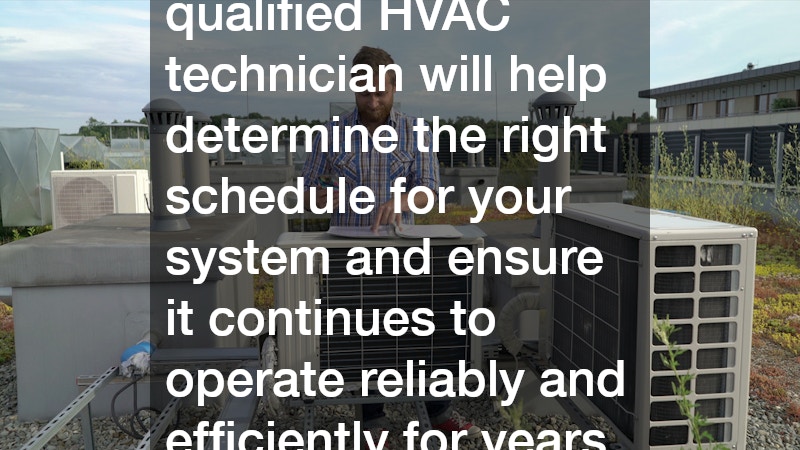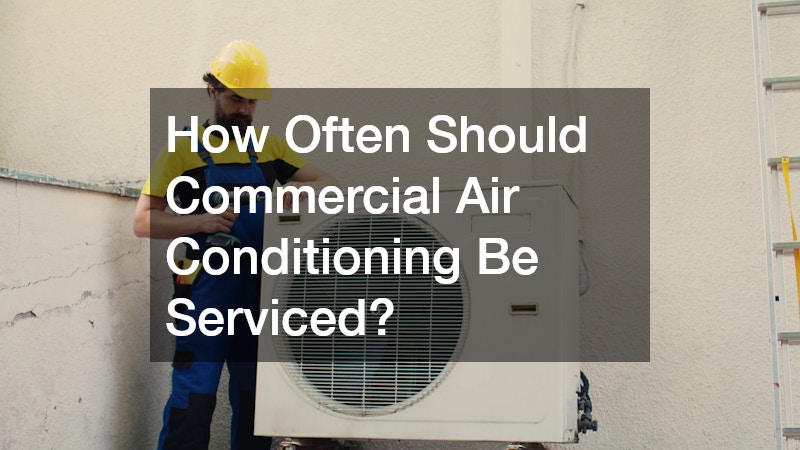In the Australian climate, commercial air conditioning systems work hard year-round to maintain comfortable indoor temperatures in offices, retail spaces and industrial settings. Whether it’s beating the heat during summer or providing warmth in cooler months, a well-maintained system ensures optimal performance, energy efficiency and air quality.
But how often should commercial air conditioning be serviced? The answer depends on various factors, including system usage, the type of building and environmental conditions. This guide outlines the recommended servicing frequency and highlights the importance of regular maintenance to protect your investment and ensure the health of building occupants.
Why Regular Servicing Is Essential
Commercial air conditioning units are typically larger and more complex than residential systems. They may include multiple zones, ductwork networks and advanced automation features. As such, they are more susceptible to wear and tear from constant operation. Without routine maintenance, components like filters, coils, compressors and fans can accumulate dust, degrade or fail prematurely.
Failing to service your air conditioning system regularly can result in reduced energy efficiency, which leads to higher utility bills. It can also compromise indoor air quality, potentially triggering health issues for staff and visitors. Moreover, the likelihood of costly repairs or sudden breakdowns increases and the system’s overall lifespan can be significantly shortened. Preventative maintenance addresses these concerns before they become major problems, ensuring your commercial premises remain comfortable and compliant with Australian standards.
Recommended Servicing Frequency
Quarterly Servicing (Every 3 Months)
For most commercial properties, quarterly servicing is the industry standard. This frequency is suitable for buildings with high foot traffic or critical operations such as data centres, medical facilities, retail outlets and hospitality venues.
Quarterly maintenance usually involves cleaning or replacing air filters, inspecting and testing system controls, checking refrigerant levels, cleaning condenser and evaporator coils, lubricating moving parts and ensuring thermostats are operating correctly. This level of upkeep ensures the system remains reliable throughout the year, particularly during seasonal peaks in summer and winter.
Biannual Servicing (Every 6 Months)
If your commercial air conditioning system operates in a low-demand environment—such as a small office with limited occupancy—you may opt for biannual servicing. However, this should only be done following a professional assessment, as inadequate maintenance may lead to operational inefficiencies or system failure. In these cases, it’s advisable to schedule servicing at the start of summer and again before winter to prepare for heavier usage periods.
Monthly Inspections for Critical Systems
Some commercial settings—such as food production areas, health care facilities or server rooms—require even more frequent attention. In these cases, monthly inspections are recommended to monitor performance and identify any signs of malfunction early. These inspections are generally shorter and less intrusive but allow technicians to catch issues like refrigerant leaks, clogged filters or electrical faults before they affect operations.
Signs Your System Needs Immediate Attention
Even with a routine maintenance schedule, certain signs may indicate your system requires servicing sooner. Sudden spikes in energy consumption, unusual noises or vibrations and inconsistent temperatures across different zones may point to internal problems. Persistent odours or visible dust from vents can indicate poor air filtration, while water leaks or ice buildup may suggest blocked drains or faulty components. These symptoms suggest potential problems that could worsen if not addressed promptly. If any of these arise, contact a licensed HVAC technician immediately.
Customised Maintenance Plans
Not all commercial buildings are alike and neither are their HVAC needs. A tailored maintenance plan is the most reliable way to ensure appropriate service frequency for your system. HVAC professionals consider the system’s age, usage intensity, brand, local climate and occupancy levels to develop a plan that balances performance with cost-efficiency. Some businesses also opt for maintenance contracts with service providers to streamline regular inspections and reduce the risk of forgotten appointments or emergency breakdowns.
Compliance With Australian Standards
In Australia, commercial building owners must adhere to specific regulations regarding air conditioning maintenance, particularly under the National Construction Code (NCC) and AS/NZS 3666 standards relating to microbial control. Regular servicing is essential to meet these compliance requirements and reduce the risk of legal liability due to poor air quality or system failure. Service records should be kept and updated consistently to demonstrate compliance during audits or inspections.
Energy Efficiency & Environmental Impact
Well-maintained commercial air conditioning systems consume less power, helping reduce greenhouse gas emissions and lower operating costs. Dirty coils, blocked filters and refrigerant leaks all contribute to energy inefficiency. Regular servicing ensures these issues are addressed quickly, making your building more sustainable and environmentally responsible. Businesses that invest in energy-efficient air conditioning systems and maintain them properly may also qualify for rebates or incentives under Australian government programs.
Final Thoughts on Servicing Commercial Air Conditioning
Commercial air conditioning is a vital asset in any business setting. To protect your investment, reduce energy costs and maintain a healthy environment, regular servicing is non-negotiable. In most cases, servicing every three months is ideal, but this can vary depending on your specific needs and building conditions.
Consulting with a qualified HVAC technician will help determine the right schedule for your system and ensure it continues to operate reliably and efficiently for years to come.
.


